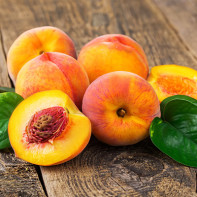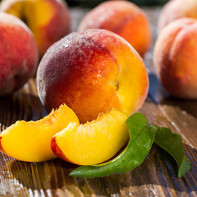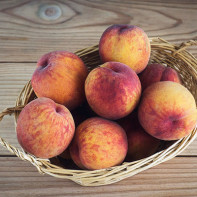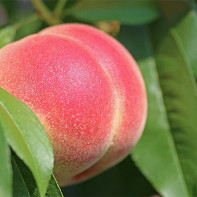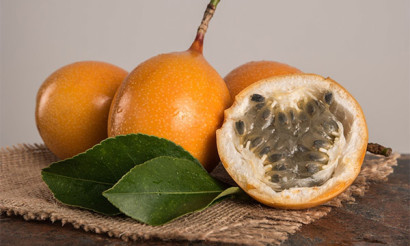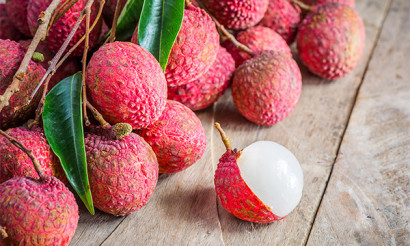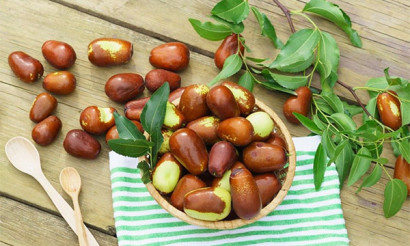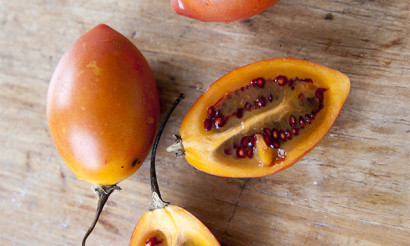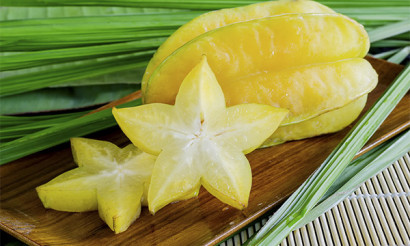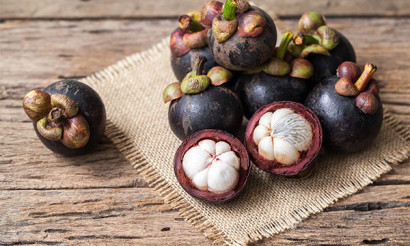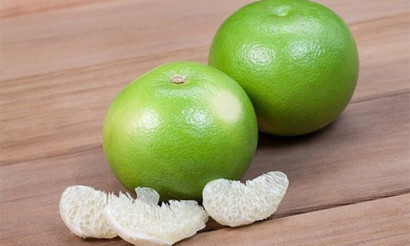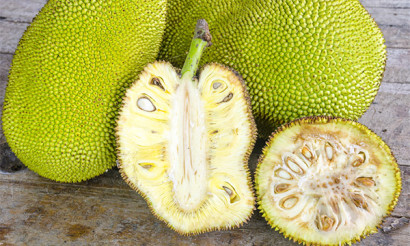Peaches: useful properties and contraindications.
The peach is one of the tasty gifts of nature. In the summer period, both children and adults love to enjoy this juicy and fragrant fruit. But this product is characterized not only by its sweet taste, but also by its beneficial properties, which have a therapeutic effect on the human body. The peach helps to maintain beauty, gives strength and energy.
- What is the difference between peaches and apricots
- Which is healthier
- The difference between peaches and nectarines
- Which is healthier
- Composition and calories
- How to use peaches
- General benefits
- For Women
- For Men
- For Pregnancy
- For breastfeeding
- For children
- Benefits and Harms of Canned Peaches
- Dried and dried peaches
- How to Dry
- Are peach seeds useful?
- What is Peach Juice Good for?
- How to Make Juice
- Peach oil: properties and application
- Can we eat peaches to lose weight?
- Peaches in Medicine
- Diabetes mellitus
- In pancreatitis
- For gastritis
- For the bowel
- For constipation
- For gout
- For colitis
- For the liver
- For hemorrhoids
- For cholecystitis
- Peaches in cosmetology
- For Face
- For Hair
- Harms and Contraindications
- Symptoms of Peach Allergy
- How to choose and store peaches
- Can peaches ripen at home?
- Can peaches be frozen?
- What can be made of peaches: Recipes
- Jam
- Kompot
- confiture
- Wine
- Smoothie
- Jam
- Candied fruit
- Marmalade
- Sauce
- How to Preserve
- How to Caramelize
- How to Eat a Peach
- How much you can eat a day
- You can eat at night and on an empty stomach.
- Can I Eat Pips?
- Can we eat the peel?
- How to peel peaches
- Can we give peaches to pets?
- Interesting Facts about Peaches
The useful and harmful properties of such a fruit with juicy flesh and a pleasant specific flavor is an important question, since they are consumed by the vast majority of people.
What is the difference between peaches and apricots
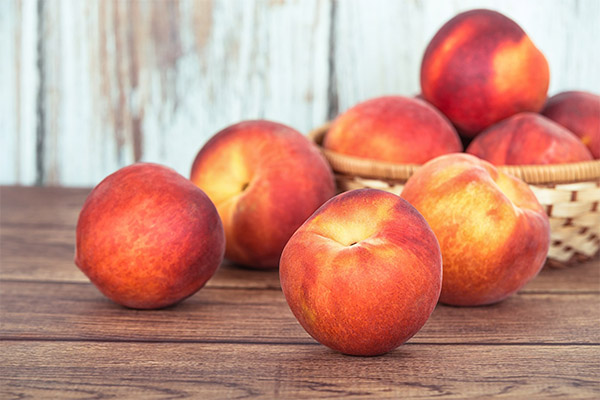
- Compared to peaches, apricots contain more retinol, which has a positive effect on vision and skin health. Also, apricot fruits are ahead in the amount of potassium, which is important for ensuring the normal functioning of the cardiovascular system.
- Peaches differ from apricots in the high content of zinc. This substance is necessary for the skin, nail plates and curls. With the help of this element you can get rid of acne and obesity.
- Peaches are enriched with magnesium. For comparison, the concentration of this compound in apricots is half as much. When deficient in this mineral, a person can develop heart disease, depression, and nervous system disorders.
- Tocopherol in the fruit of the peach tree is also more than in the fruit of the apricot. This vitamin has antioxidant properties, and also helps to improve the activity of the circulatory system.
Which is healthier
Both of these products are characterized by a rich composition, which has a beneficial effect on the entire human body. But if you choose between peach and apricot, considering their useful qualities, it is worth noting that the leader in this case has the first fruit. In this product is much more nutrients. But at the same time it should be remembered that this fruit can cause allergic reactions.
What is the difference between peaches and nectarines
In addition to the usual peaches with a velvety surface, there is another kind of fruit in nature, which has a small size and smooth skin. We are talking about nectarines. Both products are very tasty, and it is quite difficult to determine which of them is healthier, and how they differ from each other, except for external features.
The composition of peach fruits and nectarines is approximately the same, and they are characterized by approximately the same properties. The main difference is that the latter taste sweeter and therefore have a higher caloric value. For example, the caloric value of 100 grams of nectarines is 48 kcal.
Which is healthier
Both fruits are useful, but if a person has been diagnosed with diabetes or he is on a weight loss diet, nectarine is undesirable to use in his diet.
If you just want to eat something sweet and healthy, you can buy juicy nectarines. And for regular consumption, especially in the period of weight loss or the fight against sugar disease, it is better to choose peaches, as they are less harmful to health.
Composition and calories
The useful properties of the fruit are due to the presence of a complex of vitamins and minerals.
- The fruit contains a large amount of ascorbic acid, retinol, which is a strong antioxidant, vitamin K, tocopherol (vitamin of youth).
- The product contains nicotinic acid, which ensures normal blood circulation and redox processes.
- Peaches are also rich in fiber and dietary fiber. They are necessary for the proper functioning of the digestive tract and colon cleansing.
- The essential oils in the fruit give a pleasant fragrance and also accelerate the regeneration processes in the tissues. Organic acids regulate CNS activity, pectin improves the work of the excretory system.
- Of mineral compounds, Mg, K, Cu, Fe, Zn, P, etc. are found in peaches.
In addition, there are a lot of saccharides in these fruits, but this does not mean that they are caloric. There are only 39 kcal per 100 g of product. If you eat a few fruits every day, it will not affect your figure.
What are the benefits of peaches
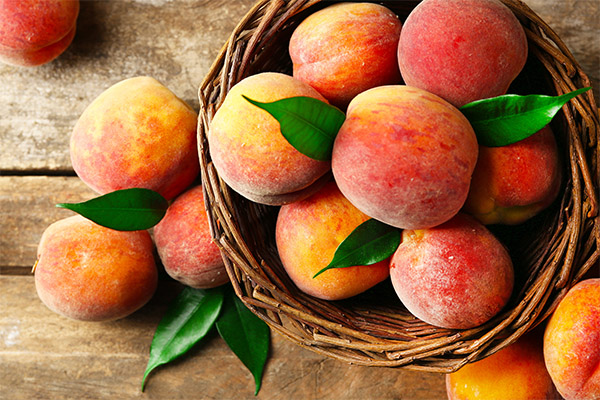
General benefits
- Peaches are useful for urolithiasis. Thanks to their diuretic property, they can remove small stones from the bladder. This same quality allows you to cope with edema.
- The presence of potassium in the product provides normal functioning of the heart muscle and blood vessels.
- The positive effect of the fruit on the brain by stimulating neurons has been found. Peach is recommended for improving mental abilities, strengthening memory, improving vision and the ability to absorb information.
- Peach fruit is especially valuable for colds. Bactericidal characteristics of the product help to overcome various viruses. They strengthen the immune system and cope with the symptoms of avitaminosis.
- The large amount of fiber supports proper metabolism.
- In addition, the consumption of peaches provides a good mood, gets rid of depression and relieves fatigue.
- Also, this product has anthelmintic properties. It is enough to include such a fruit in the daily diet to get rid of parasites and make prevention of their appearance.
For women
Peaches are useful for the female half of humanity. The main feature of this fruit is considered a low calorie, great taste and pleasant aroma. Often, such a component is present in diet diets. During weight loss, the fruit of the peach tree can be used instead of sweets and baked goods.
Peaches also help to moisturize the skin. They help restore the water-alkaline balance in the body. The acids in the product allow cleansing the skin from keratinized cells and have a rejuvenating effect.
In addition, fruit should be present in the menu of girls during menstruation. They have high levels of iron, saccharides and vitamins, which can make up for their deficiency in the discharge. These compounds get rid of cramps, cope with dizziness and eliminate general malaise during menstruation.
For men.
The high zinc content of peaches regulates hormone levels in men. This product also protects male representatives from the development of prostate diseases.
The tropical fruit is used for the prevention of heart disease. Constant consumption of such fruit allows you to adjust heart rhythms, remove "bad" cholesterol from the body. This reduces the risk of atherosclerosis. The product also contains a large amount of vitamin A. This substance reduces the likelihood of blood clots.
When pregnant
Peaches can cope with toxemia of the first trimester, quench hunger and thirst on a hot day and relieve swelling. The dietary fiber in the fruit eliminates constipation, which pregnant women often face. The fruit is quickly absorbed by the body and transported by blood, which allows the metabolic processes.
Magnesium in the fruit improves the well-being and improves the psyche of the expectant mother, folic acid regulates the hormonal background and ensures the proper development of the fetus. Potassium controls the heart, reducing the load on the organ and preventing spikes in blood pressure, calcium helps the formation of the skeleton of the future child.
The presence of phosphorus helps to ensure the health of the nails, curls, teeth, and bone system of the pregnant woman. High iron content prevents iron deficiency anemia in both mother and fetus.
When breastfeeding
During the lactation period, it is recommended to introduce such a product into the diet of a young mother not earlier than a few months after the birth of the child. Peaches can harm the baby and provoke allergies. Therefore, it is better to postpone the use of such a fruit for later.
For children
In general, peaches are useful for children. They can normalize digestion, provide the growing body with useful substances and improve vision. Give your baby this product should only be after seven months, and in small quantities. This is due to the fact that peaches can lead to allergic reactions. Start introducing this product to children with fruit juice based on this fruit. At the same time it is necessary to give no more than 10 drops a day, watching the reaction of the body. If there were no allergy symptoms, then in the future you can offer your child peach puree.
Up to a year old children can be given no more than 70 g of tropical product. Before using it, it is recommended to consult a pediatrician.
The benefits and harms of canned peaches
In the winter period, it is quite difficult to find peaches. Even if they manage, their quality and usefulness are questionable. At this time, you can take advantage of processed fruits. For example, in great demand are canned peaches, which can be stored for a long time without losing their excellent taste.
Peaches in syrup are as useful as fresh fruit. They contain many vitamins and mineral elements. Such a product helps to eliminate nausea, provides digestion of fatty foods.
However, the peach fruit in this form has some negative aspects. As a result of such processing, the product is quite caloric, which can have a negative impact on the figure due to the high sugar content. For the same reason, such preservation is contraindicated for diabetics.
The benefits of dried and dried peaches
Another variety is dried or dried fruit. Such a treat is also quite popular in the winter. They are used to make jam, compote and jam.

Dried peaches are useful for cardiovascular diseases, upset stomach, nausea and vomiting. But this variant of fruit processing implies a high caloric content, which exceeds 250 kcal. Therefore, you should not use such a dessert during a diet.
How to dry
Fresh fruit must first be sorted. If the fruits are large, they must be cut in two parts, small specimens are dried as a whole.
Next, the raw material should be washed. Cover a tray with parchment and put a thin layer of peaches on it. Next, place the fruit in the oven at 60 degrees. During drying you should constantly turn the fruit.
Are peach seeds useful?
Not only the fruit of the peach tree is useful, but also other parts of the plant. For example, the seeds are used to obtain fragrant oil. In this case, the method of cold pressing is used. Such a substance is widely used in cosmetology. The oil is an ingredient in most masks, creams, lotions.
Despite this, you can not eat the kernels of the seeds in unprocessed form, because they contain toxic substances for humans.
What is peach juice good for?
The natural beverage, prepared without any chemical additives, is a very useful product. Peach juice has two important properties.
- This product is used in the fight against constipation. Regular use of the drink is the prevention of their appearance, thus ensuring a healthy and fast functioning of the intestines.
- In addition, peach juice helps to increase acidity in the stomach. This suggests that it can be used in the case of gastritis accompanied by low acidity.
The benefits and harms of the product depend on when to consume it. It is recommended to drink such a fruit squeeze after a meal. You should not use the juice when you have a strong sense of hunger.
How to make juice
To prepare peach juice with pulp, first you should take the right amount of fruit and peel it. Next, grind the fruit raw material with a blender or an ordinary meat grinder. The resulting mush pour into a container for boiling, put on the fire and bring to a boil. After that, grind the peach puree to get rid of lumps, add the desired amount of water and boil again.
Ready drink pour into sterilized jars, covering them with aluminum lids. Next, place the container with the juice in a large bowl with warm water. Sterilization is carried out at one hundred degrees. For jars of 0.5 liters, 15 minutes is enough, for one-liter containers, 20 minutes will be required.
After this, the fruit juice is rolled up, turn the jars upside down and wrap them tightly.
Peach Oil: properties and uses
The oil is obtained from the kernels, which are located in the peach pit, by cold pressing and filtering. The finished product has a pale yellow color, a faint aroma and a delicate structure. Vitamins, carotenoids, fatty acids, various minerals and enzymes are found in the composition of such vegetable oil.
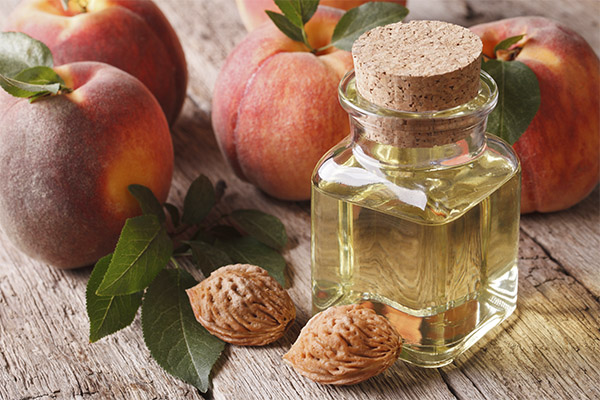
Peach oil is used to strengthen hair and enhance its growth. In addition, this product helps to cope with dry skin, gives it elasticity and firmness, improves complexion. The oil is also characterized by its rejuvenating and antioxidant properties.
Useful oily liquid and for the nails. The product is able to strengthen them, give them a shine.
The oil is also known to be used in medicine. The product improves digestion, has a positive effect on the metabolism and blood vessels. In addition, the product of the processing of peach seeds is used to normalize cholesterol levels, healing wounds, strengthening the body's defenses, as well as excretion of toxins. Often such a component is used in ENT diseases.
In cooking, peach kernel oil can act as a dressing in combination with other spices or serve as an ingredient for cooking complex sauces.
Can I Eat Peaches to Lose Weight
The peach can be used as a dessert. The fruit is sweet, so it can replenish the body's need for glucose. This will help prevent breakdowns as well as reduce the number of calories consumed. During the diet, peaches will help provide the body with the necessary vitamins and mineral compounds. Thanks to diuretic and laxative properties, the product provides rapid excretion of unnecessary substances. Along with this, the absorption of useful substances is improved.
There are even special diets in which these fruits are the main food item. Before using such an option, it is necessary to consult with a specialist.
The choice of diet in this case depends on the goals that a person is pursuing. So, if you need to eliminate the heaviness after overeating, you can choose a discharge day. If you need to get rid of extra pounds in a short period, it is recommended to use a short diet.
Peaches in medicine.
In addition to vitamins that have a positive effect on the human body, peaches contain pectin, organic acids, selenium, manganese. In the seeds of the fruit concentrated 45 percent of fatty oils, which are widely used in medicine and food production. The pulp of the fruit is a vegetable fiber, which has a laxative effect and improves gastrointestinal function.
Hypertensive patients are advised to eat peaches due to their diuretic property. B-group vitamins help to cope with insomnia. With depression, stresses should also take such a product.
If you have diabetes.
The peach has fructose in its composition, therefore, patients with diabetes can consume this tropical fruit and not harm their body. In addition, they contain phenolics, which accelerate metabolic processes, which is also very important for this category of patients.
However, in the use of such fruit you need to know a measure. It will be enough to eat a couple of peaches a day. It is recommended to exclude from the diet over-ripe fruits, as well as fruits that belong to very sweet varieties. This is due to the increased caloric content.
Important: The glycemic index of peaches is 35 units.
In pancreatitis.
Inflammatory processes in the pancreas are a reason for a cautious approach to various products. Peaches are no exception in this case. In the exacerbation phase, such fruits should be abandoned, so as not to cause irritation of the organ. In the remission phase, it is allowed to consume peaches in the form of kissel, jelly, as well as fresh fruit, but only in small quantities.
With gastritis
The period of exacerbation of gastritis involves the rejection of fresh peach fruit. Such a product can harm the patient, because it provides the synthesis of gastric juice, as well as increases peristalsis.
As for the remission phase, at this time you can drink peach kissel or compote without added sugar. Consumption of fruit puree of boiled fruit is allowed. Such a treat can be added to porridges or mixed with cottage cheese. The main thing in this case - eat peaches only on a full stomach and in moderation.
For the intestines
Peach pulp contains a lot of fiber, which is useful for the intestines. This component can normalize the functioning of the intestines, as well as improve peristalsis.
With constipation
As already mentioned, the fruit of the peach is characterized by a laxative effect. Consequently, the product can be used to eliminate constipation, as well as the prevention of its occurrence. It can also be eaten during the period of carrying the fetus.
With Gout
Gout is a disease that requires a special approach to the choice of food. As for peaches, they can be eaten with this condition, but only in small quantities. A couple of fruits once every 2-3 days will be enough.
In colitis
All fruits have in their composition a lot of fiber, which is extremely necessary for the organs of the digestive tract. The peach in this case is no exception. However, you need to remember that only soluble fiber can be used with inflammation of the intestines. The insoluble form can only aggravate the condition. Therefore, doctors advise patients with colitis to approach the intake of such fruit with special caution.
For the liver
When you have liver disease, you should consume such juicy and delicious fruits. Peaches have a mild choleretic effect and ensure the removal of harmful elements from the body. In addition, the fruits of the plant help to reduce inflammation and support a weakened liver.
In the course of studies, it was found that such a plant product contains ethanol, which protects the organ from cellular damage by medical drugs. Contraindication in this case can only be an individual intolerance.
When hemorrhoids
In the presence of hemorrhoids, you need to use with caution such a tropical fruit as the peach. The danger of its use in such a disease lies in the fact that peaches can increase the level of hemoglobin, which affects blood clotting.
In cholecystitis
In the treatment of cholecystitis, diuretics and choleretic agents are used. In the diet for this pathology should be present peaches. But if the disease occurs together with pancreatitis, you can not eat the fruit on an empty stomach.
Peach juice has a fast choleretic effect. Only ripe fruits can be used for this drink. You can drink juice no more than one glass at a time. In this case, the fruit must be ripe, without rottenness. They should first be thoroughly washed, you can even treat them with boiling water. In the process, you can not use sugar.
Peaches in cosmetology
The pulp of the peach fruit and the juice squeezed from it are often used in beauty recipes at home. The benefit of such a product for the face is that it improves the color of the skin and its structure, moisturizes, gives freshness, makes it firm, promotes the preservation of youth. There are various masks that can easily be prepared at home by yourself.
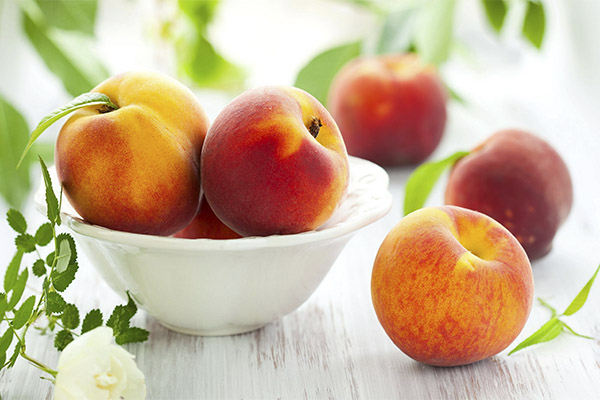
For face
Sensitive skin especially needs thorough cleansing and softening. Peach is excellent for this purpose. You can prepare a mask for this type of skin. For this you need to mix grated fruit pulp with 25 g of grated low-fat cottage cheese. Add 1 tsp. honey to the mixture. The mass should be thoroughly mixed and evenly spread on a preliminary cleansed face. Hold the mask for 15 minutes, then rinse and apply nourishing cream. Repeat the procedure three times a week before going to bed.
For normal and oily skin type is suitable mask using peach and starch. In this case, the pulp of one fruit should be crushed until a pulpy mass. Add 1 tsp. of starch. Mix and distribute the mixture on the face. Remove the mask after 20 minutes. Repeat this three times a week. Such a mask, in addition to softening, also contributes to the narrowing of pores, which leads to a reduction in oiliness.
For hair
- It is very easy to prepare a peach mask for hair with split ends. You just need to remove the skin from two fruits, take out the pit and grind the fruit with a blender. The resulting mush should be applied to the damaged areas, and then wrap the hair in clingfilm and wrap with a towel. Masque to keep for half an hour. Then wash it off with cool water and shampoo.
- You can improve such a recipe by adding milk. In this case, add a few spoons of milk to the puree of one fruit, so that the mixture becomes the consistency of sour cream. It is recommended to add a couple of drops of oregano oil. Keep the resulting mass on the head for 40 minutes.
- Peach is also used to apply to the entire length of the hair. It has nourishing and moisturizing properties, makes curls obedient. To prepare such a remedy, you will need two peach fruits, 2 tablespoons of honey, a few drops of jojoba oil. Mix the ingredients to obtain a thick mass, if desired, you can add a little water to it. Keep the mask on the head for 35-40 minutes.
Such nourishing masks for hair are suitable for any type. They can be used even in the case of colored curls. The only contraindication to the use of such a composition is an individual intolerance to the individual ingredients.
Harm and contraindications
Even such a delicious and useful fruit, as a peach, has its limitations and contraindications. Exclude the delicacy from the diet is necessary in the presence of stomach diseases, which are accompanied by high acidity. Individual allergic reactions to the fruit can be a contraindication to the consumption of such a product.
With caution you should consume peaches for people with obesity, as well as in case of diabetes. It is not necessary to completely exclude the fruit, it is enough just to observe the measure. For example, two pieces a day will be enough.
Peach allergy symptoms
Peach allergy has almost the same symptoms as other foods. The main signs of an allergic reaction are swollen lips, swollen skin and mucous membranes, allergic runny nose, cough or conjunctivitis. In addition, gastrointestinal disorders may occur, such as diarrhea, vomiting. Anaphylactic shock and even Quincke's edema may also develop.
How to choose and store peaches
In order for the tropical fruit to be the most useful, you need to choose it correctly. When buying, you need to pay attention to the color of the fruit. Quality products should not have green or dark spots, they have a uniform yellow or yellowish color. The place where the stalk is attached should not be dry and rotten.
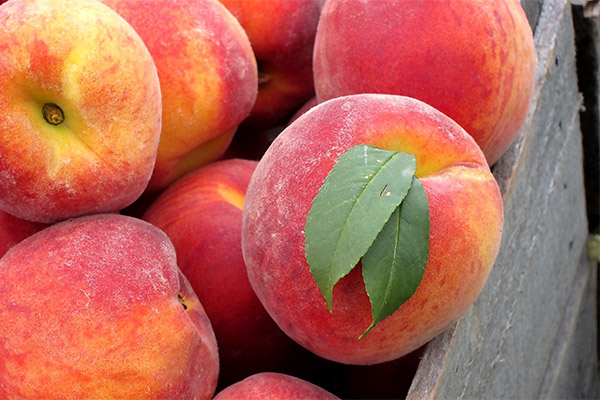
There should also be no soft barrels on the peach. The ripe fruit smells pleasant. Green and overripe peaches are not characterized by this aroma.
It is important that the product is natural, grown without chemical additives. You can tell when you cut the fruit. The flesh of a good peach is juicy, but if the fruit is treated with chemicals, it is dry and tough.
Buying such a product, you need to focus on the season. For example, fresh fruit can be bought at the end of summer.
It is recommended to store peaches in the refrigerator for a week, but it is better to eat them immediately. After a few days of storage the fruit loses its juiciness and taste.
Can peaches ripen at home?
If you bought not quite ripe fruit, there is no reason to be upset. The fruit can ripen at home if you keep them a few days at room temperature.
You can do this by laying out a linen cloth on a flat surface and laying peaches on it so that the stalks are facing down. The fruits in this case should not touch each other. The peaches can be covered with another linen cloth. Cover them completely, if possible even putting a napkin around the edges under the individual fruits. This is done to prevent air from getting to the fruit. The ripening in these conditions usually takes a few days, but the result is worth it, because in the end the fruit will be juicier. After 2-3 days you should check the state of the product, if the fruits are not ripe, you should leave them for another day.
To speed up the ripening process, you can put the fruit in a paper bag along with a bunch of bananas.
Can I Freeze
Freezing peaches is one option for storing such a product. It is better to freeze the fruit whole. First, the fruits should be washed and dried. Then, each of them should be wrapped in paper and put in a bag so that they do not crush each other. In this form, send the peaches to the freezer.
Frozen product is used as a filling for baking, for making compote. To make such a drink, it is enough to put the fruit immediately in boiling water without defrosting.
What can be cooked from peaches: recipes
The fruit of the peach plant is used for culinary purposes as fresh and for obtaining various desserts. When the peach is heat treated, you can get jam, jam, kissel, juice, compote and even alcoholic drinks. The fruit is also a filling for muffins and pies. Pieces of these fruits are added to cereal porridge, thereby improving the taste of the dish.
Jam
A classic recipe for peach jam includes 3 kg of fruit, 2 kg of sugar and 0.5 tsp of citric acid. Peach fruits should be washed, peeled and pips removed. Then crush the pulp in any convenient way. This can be an ordinary meat grinder, but you can also use a blender. Fill the mass with sweetener and mix. In this form the jam should stand for several hours. Then put the jam on the stove. After boiling, add citric acid. Boil the dessert for 40 minutes with constant stirring. The finished product is packed in jars, which must first be sterilized. Put jars in their sealed jars for long term storage.
Compote .
For the preparation of one jar of delicious compote need 9 peaches, 5 liters of water, a cup of sugar and 0.5 tsp. citric acid. The fruits should be thoroughly washed. Three-liter jar steeped and put in it sliced into two pieces of fruit. Pour sugar and citric acid on the peaches. Pour the water into a large container and boil. When the liquid boils, pour to the neck of the jar with peaches. Now roll up the jar, turn it over and let it cool for a day. The finished drink can be sent for storage in a cool place.
Confit
To make the confit, you need to take 1 kg of peaches without seed or skin and sugar, a glass of water and half a lemon. Citrus not only gives the dessert a pleasant taste, but is also a preservative.
First you need to boil water and pour the granulated sugar into it to make a syrup. Then add the juice of the lemon, and then boil the liquid until it thickens. The syrup must cool. During this time, prepare the peaches, that is, peel them from the skin, pips and cut into slices. When the temperature of the syrup is equal to 40 degrees, dip the peaches in it and stir. The fruit should stand at room temperature for a day. After that, bring the peach pieces to a boil in the sweet syrup and cool again in the room for several hours. For the third time, the mass should boil for about 40 minutes. The dessert is ready. You just need to spread the still hot delicacy in sterile containers and seal it hermetically.
Wine
Even wine can be made from peaches at home. You will need 7 kg of seedless fruit, the same amount of sugar and water, and 1 liter of vodka.
In a large glass container, pour clean water and put washed and peeled fruits in it. In the same bowl add sugar and vodka. Put the bottle in the sun or in a warm place for fermentation. Stir the mass every day, so that the sugar dissolves completely.
After 2 weeks, the peaches should rise to the top. Strain the liquid, remove the collected fruit residues. Send the filtered drink to the refrigerator. After a few days, strain the wine again, and then cork it. Store this product in a dark and cool place. After two months, the wine will be ready.
Smoothie
The pulp of three peaches should be cut into small cubes, chopped in a blender. Pour a glass of natural yogurt into the resulting puree and whip until smooth. A tasty and healthy smoothie is ready.
Jam
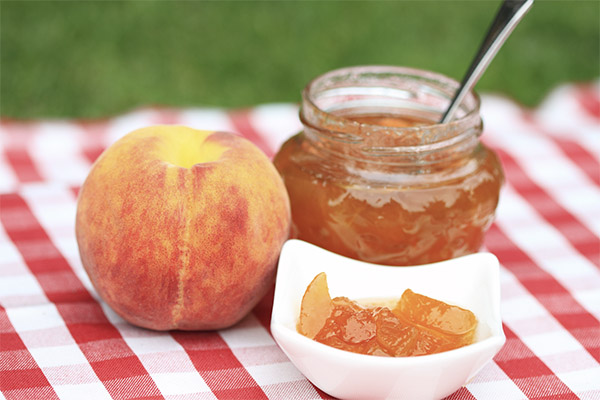
To make jam you will need 1 kg of fruit, 2 kg of sugar, a glass of water and 4 grams of citric acid. First you need to wash the peaches, pour them for a few minutes in boiling water, then cool and peel them. Then remove the seeds and grind the peach pulp. The resulting raw material is placed in a saucepan and sprinkled with granulated sugar. Then add citric acid. Put the mass on a small fire, pour water and bring to the appearance of foam. After removing the foam, remove the jam from the fire and cool it. Next, carry out the procedure of heating and cooling two more times. Ready dessert pour into jars and seal. Treat will take on a golden color.
Candied peaches
To prepare candied peaches with your own hands, you need to prepare 2 kg each of sugar and fruit and 1 liter of water.
The fruit should be washed, peeled and cut into small pieces of equal size. Next, dissolve the sugar in water and put the mixture on the stove. Dip the peach slices in the boiling syrup, bring to the boil and cook for a minute. After 60 seconds, take the dessert off the heat and cool. Put the cooled dessert back on the stove and bring to a boil. The process can be repeated 3 to 6 times until the peaches are soaked and soft.
Then take the fruit slices out of the sweet liquid and put them on a colander. All the syrup should drain off. Next, sprinkle the peach slices with sugar and spread out to dry. Ready candied peaches should be stored in an airtight container.
Marmalade
To make marmalade should be 1 kg peach fruit cut into small pieces and pour 150 ml. water. Put the mass on the fire and boil until the fruit pulp is boiled. Next, cool the mixture and grind it with a blender. After that, add a pinch of citric acid, granulated sugar to the peaches and put on the stove again. Cook the dessert several times, bringing the mass to a boil and cooling it. When the fruit puree has reduced by three times, pour it on a baking tray, the thickness of the layer should be 2 cm. Preparations for marmalade cover with parchment paper and dry about 7 days. Cut the ready dessert and sprinkle with powdered sugar.
Sauce
Ingredients: 0.6 kg of peaches, 100 g of sugar, 0.5 l of dry white wine, 1 tsp. mustard (fresh or in powder form) and the same amount of grated ginger.
First, you need to peel the peaches from the skin, remove the seeds and chop them. Pour the fruit pulp with sugar, stir it and put on the stove. Next, add wine. In this form, cook the mixture for 50-60 minutes. The sauce should be thick. Then add the rest of the ingredients and cook the dressing for about 15 minutes more. The dressing can be left in chunks or chopped to a purée. Such a dressing should infuse for several days on the shelf of the refrigerator. If you intend to store such a sauce for a long time, in the recipe you need to increase the amount of granulated sugar, and the finished dish should be poured into sterilized jars and closed with lids. The use of the indicated number of ingredients results in an average of 500 ml of delicious sauce.
How to can
The recipe for canned peaches includes 2 kg of fruit, 0.4 kg of sugar, 1 l of water, 2 tsp of citric acid. So, first you need to wash the peach fruits and dry them with a paper towel. Next, divide them into two pieces, remove the pit and remove the peel. Place the pieces of peach in a sterilized container. Then, boil water in a saucepan and pour it over the fruit. Leave the jars in this form for 15-20 minutes, and then pour the liquid into a pan. Add the sugar and the sour ingredient. Boil the mixture for a few minutes. Pour the resulting syrup over the peach fruit and immediately close the jars.
How to caramelize
You will need 4 peaches, 3 tbsp. sugar and 1 tsp. vanillin. To begin, peel the fruit from the skin and pips and chop. Now pour the sugar on a hot pan and stir it constantly. When the product begins to melt and change color, add the peaches and bring them to a semi-cooked state. At the same time add the vanillin. In the process of heat treatment, the fruit mass loses liquid, and the juice released together with the sugar syrup forms a thick liquid. In such a mixture, cook the fruit until it is half-ready. They should turn out soft, covered with syrup. But at the same time, the fruit should not lose its shape and turn into jam. Next, take the fruit pulp out of the pan. If necessary, the sweet mass should be cooked until the desired consistency.
How to eat peaches properly
Before eating it is necessary to wash peach fruits under running water. It is better to wash them just before using them in food or preparing dishes and drinks based on them. If you put washed fruit in the fridge, it will spoil rather quickly. If the peel is not to your liking, you can remove it. But there is a lot of useful elements concentrated in it. You can eat such fruit like apples or cut into slices or halves.
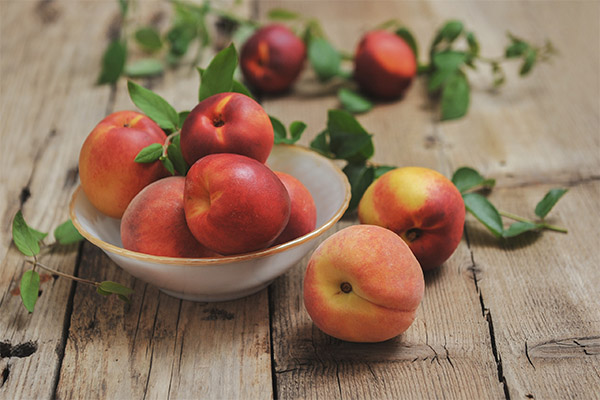
You can sprinkle peach slices with cinnamon or yellow sugar or pour cream.
In addition, such fruit is added to various smoothies, yogurts or simply mixed with cottage cheese. Also sliced peaches decorate such dishes as oatmeal or semolina, muesli, etc.
How much can be eaten per day
The number of peaches eaten per day is a personal matter for each individual. But experts recommend to eat no more than two fruits a day, and it is better to do it in the first half of the day. As for pregnant women and people who are prone to obesity, they can consume 3-4 fruits a week.
Can I eat them at night and on an empty stomach?
In peaches there is a lot of fiber, which speeds up the metabolic processes. Therefore, a snack before bedtime in the form of a peach is acceptable, but it is allowed to eat such a treat in the amount of one piece.
This product is characterized by a diuretic effect, so abuse them at night is not worth, so as not to load the kidneys. Also, experts do not recommend eating peaches before going to bed, since the high concentration of sugars in such fruits can have a negative impact on increasing the body mass index.
Consumption on an empty stomach is possible in the absence of GI pathologies.
Is it possible to eat peach seeds?
The seeds of peach fruits are of no benefit to the body. In addition, you should know that the kernels contain a lot of hydrocyanic acid, which is a poisonous substance. If you eat such parts of the fruit, you can get poisoning in the form of diarrhea and nausea. When canning fruit, you should get rid of the pips.
Can I Eat the Peel
The peel of the peach fruit contains useful dietary fiber. This makes this product indispensable in the summer. On the one hand, the peel of the fruit, as with any other fruits and vegetables, is the first layer that absorbs everything in the environment. Knowing that the environment is not so clean, we can assume that all the fertilizers, chemical additives accumulate exactly in the skin, so it is better not to eat it.
On the other hand, the peach, like the potato, has all the useful components in the peel. You can eat the peel, but before this you should thoroughly wash the fruit, trying to remove all the dirt and lint.
How to peel peaches
Peaches must be ripe. To determine this, you need to put your thumb on the fruit. A small indentation should remain.
First you need to rinse the fruit in cold water. After that, boil water in a large saucepan and prepare in advance a container with ice water, which will be used to cool the fruit quickly.
Make X-shaped notches on each peach with a knife. Such incisions should not be very deep, so that the fruit will not be boiled. Now they are immersed in boiling liquid for half a minute. Then the fruit is immediately transferred to ice water for a minute. You can do this by using a skimmer. After that, it will be very easy to peel the skin. Put the fruit on the work surface and, grabbing the skin from one of the corners of the incision made, peel the product. The procedure requires care not to remove the top layer of the fruit along with the pulp.
Can we give peaches to animals?
Peach fruits contain a large amount of fiber, which ensures normal functioning of the digestive system. But this peculiarity of the fruit works when it is consumed in moderation. Frequent intake in large quantities can cause diarrhea.
If you decide to give your dog such a fruit, you should do it very carefully, especially for the first complementary foods. After the pet tries the tropical product for the first time, you will need to monitor his condition for a day. If the pet develops symptoms of allergies and poisoning, it is necessary to immediately exclude such a treat from the dog's food. Itching and redness of the skin may appear in any place. To understand this is very easy. Animals usually itch, rub their ears and rub against various objects. Hair loss, vomiting, diarrhea, and lethargy may also occur.
As for cats, these pets usually choose what to eat themselves, so if the pet has expressed a desire to try such a fruit, there is no need to interfere.
Hamsters should not be fed peaches. The fact is that these tiny creatures are prone to develop diabetes, so juicy and sugary fruits of this plant can provoke the appearance of an unpleasant disease.
Interesting facts about peaches
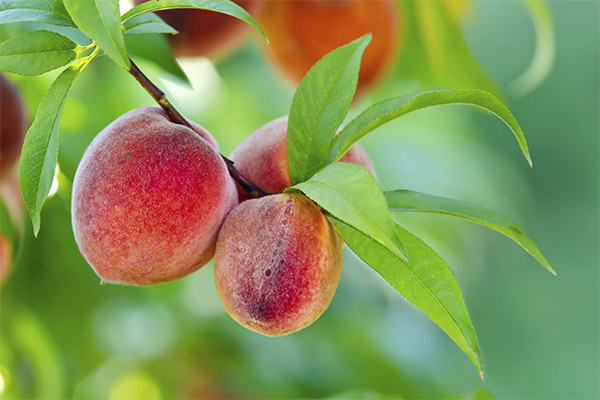
- Like apples, peaches are the most capable of absorbing various pesticides. At the same time, not all harmful substances are destroyed by heat treatment.
- Botanically speaking, a close relative of the peach fruit is the plum.
- In nature, peaches have never grown as we now know them. The familiar peach tree is the result of numerous crosses of various wild varieties of peach, almond, plum and apricot.
- The word "peach," as used in Russian, came from the original name of such a product, the "Persian apple.
- It has been proven that peaches came from countless crosses of different crops, but still scientists are of the opinion that the northern regions of China are the birthplace of such fruit.
- The presence of a fuzz on the surface of the fruit of a peach tree, as well as whether the pulp separates easily from the pit, is the division of such a fruit into real peaches, nectarines and other varieties.
- Breeders have bred a new variety of peach that has no pith, the nectarine. This variety tolerates cold climatic conditions much better. It is grown in the northern regions of Russia.
- The American state of Georgia is called the peach state by the local population, since there are many orchards there. However, the leader in growing such a delicacy is still considered to be California.
- In addition to the usual round peaches, there are also flat varieties of this fruit.
- In Russia, such fruit began to be grown only in the 16th century.
- In China, the fruit of the peach tree is considered a symbol of good luck and longevity.
- Currently, the peach is the third most planted tree in Europe. First on the list are apples and pears.
- Most of the peach production is grown by China. Second place goes to Italy.
- The first peach orchards in North America originated in the 16th century. And in ancient China, such fruit was present on the emperor's tables as early as 4,000 years ago.
- The first fruit eaten on the moon was a peach. It happened during an American expedition.
«It is important: all information on this site is provided for informational purposes only. for informational purposes only. Before applying any recommendations, please consult a health care professional. specialist. Neither the editors nor the authors are liable for any possible harm caused by materials."

